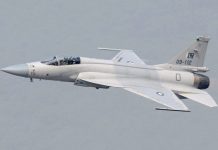ISLAMABAD: Pakistan’s export competitiveness can be enhanced by addressing the declining productivity and lowering import tariffs and energy prices. Boosting foreign investment in high-tech industries and negotiating bilateral trade agreements with neighbouring countries can help reduce the trade deficit.
In an exclusive interview with WealthPK, Dr. Muhammad Zeeshan, a research fellow at the Pakistan Institute of Development Economics (PIDE), said exports could be increased by boosting industrial productivity, which was currently declining due to the current economic crisis.
“Trade deficit is a major consequence of this, along with the lack of trade competitiveness. One of the factors affecting trade competitiveness is the high import tariff in Pakistan, which is the highest in the region, leading to high production costs,” said Dr. Zeeshan.
“The country shifted towards a free trade regime in 1981. There is still a high level of protection for international trade in Pakistan,” he added.
Another factor is the high energy prices, making the per-unit availability of prices in production very high compared to the neighbouring countries such as India and Bangladesh, he said.
According to him, simply depreciating the currency is not a solution to enhance exports, as it has several drawbacks, such as inflation, an increase in public debt, and uncertainty in the market.
He maintained that trade is disrupted when exporters and importers see uncertainty in the market, as they can’t get orders from their partners in other countries.
Continuing, he said while depreciation might improve competitiveness due to lower prices, Pakistan’s narrow scale of export and destination markets make it an ineffective strategy. The government’s objective through import tariffs is primarily to collect revenue, although in Pakistan, trade deficits are supported by import tariffs.
“Tariffs have a cascading effect, and Pakistan has an ad valorem tariff rate, which means products with high-value addition have higher tax revenue for the government. However, high import tariffs reduce production, affecting exports,” he added.
“The government provides subsidies to exporters to increase the foreign exchange reserves. However, this decreases competitiveness in the international market and reduces firm productivity due to lack of innovation and spending on research and development.”
Trade liberalization determines how international trade is distributed, Zeeshan said, adding that in addition to technological innovations, the size of economy and trade protection levels, there were many other factors that determined the pattern of gains from the international trade.
The PIDE scholar maintained that multilateral full trade liberalization policies were not effective for Pakistan, as exemplified by the South Asia Free Trade Agreement, which had not been fully implemented due to the political tensions between Pakistan and India. Bilateral trade agreements can be more effective to enhance trade with neighbouring countries, he added.
According to the latest report issued by the Pakistan Business Council, foreign direct investment has largely attracted investment in low-technology, quick payback, and consumer goods for the domestic market.
The report highlights that while Western and Japanese companies actively pursue a China+ supply chain strategy, Pakistan stands out for its failure to attract significant investments from any company relocating from China.
The report points out that exports are narrowly focused, with 61% reliance on textiles, of which 74% were directed to Europe and the USA.
The report shows that neither the government nor the industry has made significant efforts to improve productivity, while China, India, Bangladesh, and Vietnam have made significant progress in supplementing their low wage advantage through their productivity.
According to the report, with the absence of consistent policies and the provision of indefinite protection to some businesses, there was a reduction in the incentive for them to become competitive.





